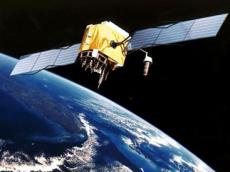|
|
TODAY.AZ / Society
Azerbaijan stops broadcasting via Turkish satellite
26 June 2013 [09:20] - TODAY.AZ
 Source: AzerNews
Source: AzerNewsAzerbaijani package broadcasting through Turkey's satellite Turksat 3A will be suspended from July 1, Teleradio production association told the press on June 25.
Currently, seven Azerbaijani TV and radio broadcasters - AzTV, Idman (Sports) Azerbaycan, Medeniyyet (Culture), Ictimai (Public TV), ATV ?nt., Xezer, and Azad Az?rbaycan (Free Azerbaijan) are allocated the resources of the first Azerbaijani telecommunication satellite Azerspace/Africasat-1a.
These channels will be available at the 11169.15 MHz, H, S/R-20400 Mb/s frequency from July.
At present, the state TV channels AzTV, Idman Azerbaycan and Medeniyyet are broadcasting via the satellite in the test mode.
Azerbaijani space agency Azercosmos completed technical work on the allocation of resources of the satellite to local TV and radio broadcasters on May 16.
Azerspace will offer many advantages to the local TV and radio companies, as well as acceptable conditions for transmission. Special data compression technology will allow TV and radio companies to reduce usage of the satellite's resources and organize packet transmission of the highest quality.
The main factor of quality will be the high level of signal transmission in the satellite's coverage area.
North African telecommunication operators started using resources of the satellite in May and the Turkish Radio and Television Corporation (TRT) broadcasters may air their programs through Azerspace-1 as well.
Some 20 percent of the satellite's resources will be used for Azerbaijan's needs, and 80 percent will be available for commercial purposes.
The satellite was designed to offer digital broadcasting services, Internet access, data transmission, to create multiservice VSAT networks and provide for governmental communication.
The satellite exploitation term in the orbit will be up to 15 years. The satellite's services will cover Eastern Europe, the Caucasus, Central Asia and North Africa.
The total value of the Azerspace-1 project is about $230 million, including expenses on the construction of ground control stations, staff training, insurance costs and launching. The satellite is expected to fetch $500-600 million to the country's coffers in 15 years.
URL: http://www.today.az/news/society/123954.html
 Print version
Print version
Views: 8088
Connect with us. Get latest news and updates.
See Also
- 07 April 2025 [18:22]
Drug smuggling attempt foiled at Azerbaijani border - 07 April 2025 [11:45]
NAM Parliamentary Network's 4th Conference in Tashkent highlights Bandung Principles - 07 April 2025 [11:36]
Sahiba Gafarova re-elected Chair of NAM Parliamentary Network at Tashkent Conference - 07 April 2025 [10:40]
Azerbaijani border guard dies in mine explosion in Jabrayil - 05 April 2025 [16:05]
Jalilabad and Masalli villages receive modern electricity infrastructure - 05 April 2025 [10:44]
Off-road vehicle rally kicks off under AAF's initiative - 04 April 2025 [10:00]
GL Group launches Azerbaijan's first-ever horizontal drilling program - 03 April 2025 [13:35]
Baku Initiative Group urges France to fulfill its commitments in Kanaki - 03 April 2025 [10:31]
Human-like skeleton fragments unearthed in Aghdara - 02 April 2025 [12:45]
Cyber threats surge by 15%: government takes action
Most Popular
 Macron's fears are starting to come true
Macron's fears are starting to come true
 China deeply regrets, rejects Fitch Ratings downgrade
China deeply regrets, rejects Fitch Ratings downgrade
 Uzbekistan, Azerbaijan forge strategic tourism partnership
Uzbekistan, Azerbaijan forge strategic tourism partnership
 N. Korean leader inspects special operation units' training on day of Yoon's ouster
N. Korean leader inspects special operation units' training on day of Yoon's ouster
 Pakistan, US agree to deepen energy ties
Pakistan, US agree to deepen energy ties
 Relocation to Suqovushan village begins: 53 families to move
Relocation to Suqovushan village begins: 53 families to move
 Future supernova of first type find near Solar System for first time
Future supernova of first type find near Solar System for first time
